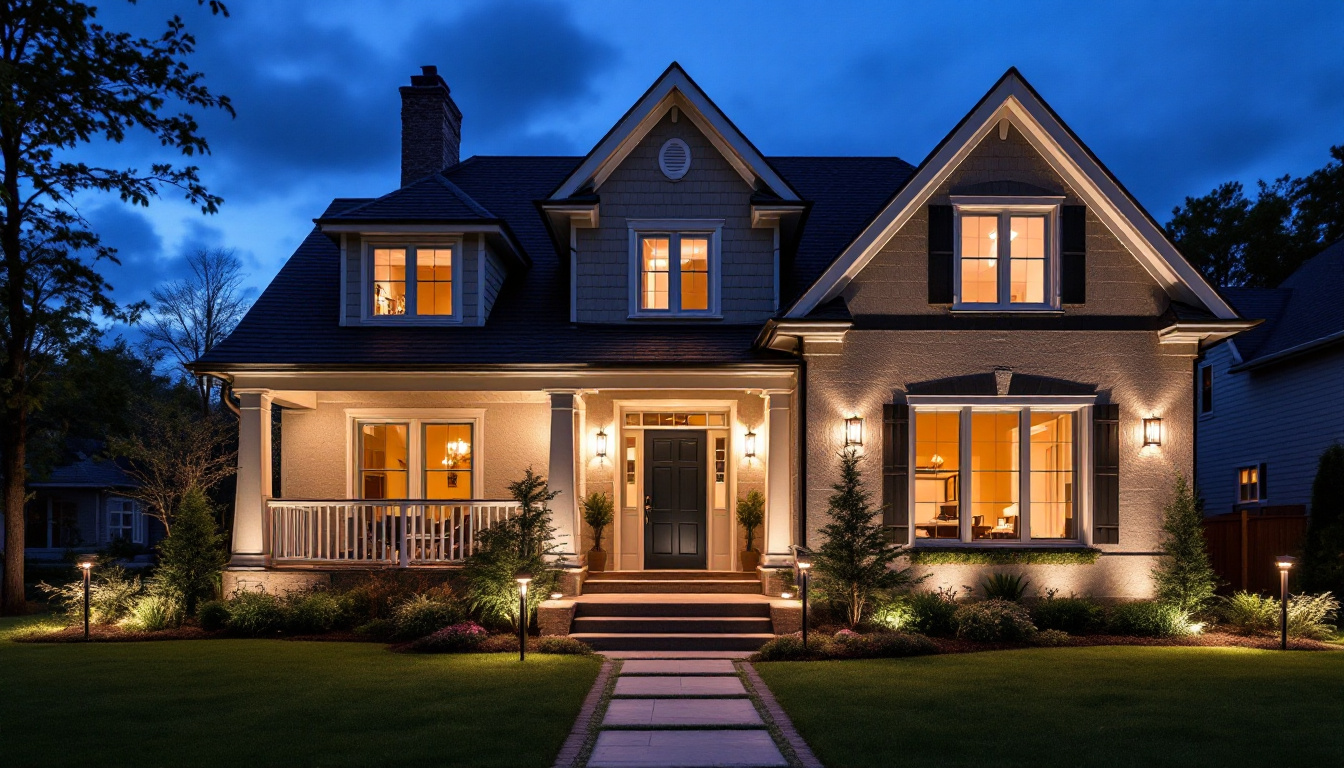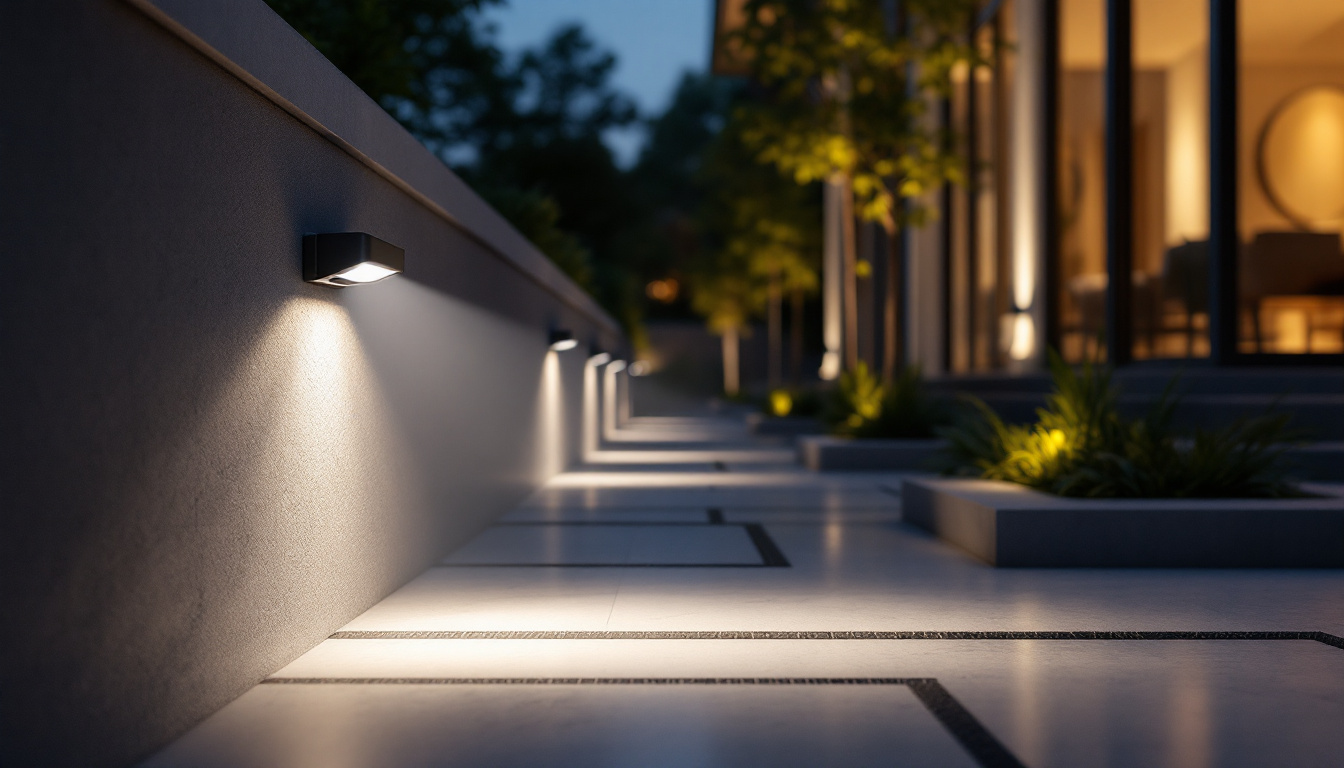
As the demand for energy-efficient and aesthetically pleasing lighting solutions continues to rise, vanity LED lights have emerged as a popular choice among homeowners and designers alike. For lighting contractors, understanding the nuances of these fixtures is essential for successful installations and satisfied clients. This article delves into the various aspects of vanity LED lights, offering valuable insights and practical advice for lighting professionals.
Vanity LED lights are specifically designed for use in bathrooms, typically mounted above or beside mirrors. They provide essential illumination for grooming tasks while enhancing the overall ambiance of the space. Unlike traditional lighting solutions, LED technology offers a range of benefits, including energy efficiency, longevity, and versatility in design.
One of the primary advantages of LED lights is their energy efficiency. They consume significantly less power than incandescent or fluorescent bulbs, which translates to lower energy bills for homeowners. Additionally, LED lights have a longer lifespan, often lasting up to 25 times longer than traditional bulbs. This longevity reduces the frequency of replacements, making them a cost-effective choice in the long run.
Moreover, LED lights emit less heat, which can be particularly beneficial in small or enclosed spaces like bathrooms. This characteristic not only enhances safety but also contributes to a more comfortable environment, especially during warmer months. The reduced heat output also means that the risk of overheating fixtures or damaging surrounding materials is minimized, providing peace of mind for homeowners concerned about safety.
Vanity LED lights come in a wide variety of designs, shapes, and sizes, allowing contractors to cater to diverse aesthetic preferences. From sleek and modern fixtures to more traditional designs, there is a suitable option for every bathroom style. Furthermore, many LED lights are available in adjustable color temperatures, enabling users to customize the ambiance according to their needs. For instance, cooler tones can create a bright and energizing atmosphere for morning routines, while warmer tones can offer a relaxing vibe for evening self-care rituals.
Contractors should stay informed about the latest design trends to offer clients the most appealing options. Incorporating stylish fixtures can significantly enhance the overall appeal of a bathroom, making it a focal point in the home. Additionally, integrating smart technology into vanity LED lights is becoming increasingly popular. Features such as dimmable settings, remote control operation, and compatibility with home automation systems allow homeowners to tailor their lighting experience even further, making their bathrooms not just functional spaces, but also luxurious retreats that reflect their personal style.
Proper installation is crucial for maximizing the performance and longevity of vanity LED lights. Lighting contractors should be well-versed in the best practices for installation to ensure safety and efficiency. A well-executed installation not only enhances the aesthetic appeal of a bathroom but also contributes to energy savings and reduced maintenance costs over time.
Before installation, it is essential to assess the electrical requirements of the LED fixtures. Most vanity lights operate on standard voltage, but some may require special transformers or drivers. Contractors should verify compatibility with existing electrical systems to avoid complications during installation. Understanding the wattage and lumens output is also vital, as this will influence the overall brightness and energy consumption of the lighting setup.
Additionally, it is crucial to adhere to local building codes and regulations. Ensuring that all electrical work is performed safely and legally protects both the contractor and the homeowner. It may also be beneficial to consult with an electrician to ensure that the circuit can handle the additional load, especially in older homes where electrical systems may not be up to current standards.
Placement of vanity LED lights can significantly impact their effectiveness. Ideally, lights should be installed at eye level to minimize shadows on the face, which is particularly important for tasks like shaving or applying makeup. For most users, this means mounting fixtures approximately 65 to 70 inches above the floor. However, it’s also important to consider the height of the mirror and the average height of the users to achieve a customized lighting solution that meets individual needs.
In cases where multiple light sources are used, such as wall sconces flanking a mirror, contractors should ensure that they are evenly spaced and positioned to provide balanced illumination. This approach helps to create a flattering light that enhances the overall grooming experience. Furthermore, using dimmable LED lights can offer versatility, allowing users to adjust the brightness according to different tasks or moods, whether it’s a bright light for detailed work or a softer glow for relaxation. Properly considering these factors will not only elevate the functionality of the vanity area but also enhance the overall ambiance of the bathroom space.
When selecting LED bulbs for vanity lights, several factors should be considered to ensure optimal performance and satisfaction.
Color temperature is a critical aspect of lighting design. Measured in Kelvin (K), it determines the warmth or coolness of the light emitted. For vanity applications, a color temperature between 2700K and 3000K is often preferred, as it provides a warm, inviting glow that is flattering for skin tones.
However, some users may prefer cooler temperatures, particularly for tasks requiring precision. In such cases, options ranging from 3500K to 4000K can be suitable. Educating clients on the impact of color temperature can help them make informed decisions that enhance their bathroom experience. Additionally, it’s worth noting that the perceived color of the light can change based on the surrounding colors and materials in the bathroom. For instance, if the walls are painted in cooler tones, a warmer light may create a more balanced ambiance, while cooler light can help highlight the crispness of modern, minimalist designs.
Brightness is another essential factor to consider when selecting LED bulbs. Measured in lumens, the brightness of the light should be sufficient to illuminate the space without being harsh or overwhelming. For vanity lighting, a general guideline is to aim for approximately 200 to 300 lumens per fixture, depending on the size of the bathroom and the specific tasks performed in front of the mirror.
Contractors should encourage clients to consider their individual lighting needs and preferences when determining the appropriate brightness levels. Offering a range of options can help ensure satisfaction and enhance the overall functionality of the space. Moreover, dimmable LED bulbs can be an excellent choice for vanity lighting, allowing users to adjust the brightness according to their activities—whether it’s applying makeup, shaving, or simply enjoying a relaxing bath. This flexibility not only enhances usability but also contributes to energy savings, as users can lower the brightness when full illumination is not necessary.
Even though LED lights are known for their longevity, proper maintenance is still essential to ensure optimal performance throughout their lifespan. Lighting contractors should provide clients with guidance on maintenance practices and troubleshooting common issues.
Regular cleaning of vanity LED lights is vital for maintaining their brightness and appearance. Dust and grime can accumulate on fixtures and bulbs, diminishing their effectiveness. Homeowners should be advised to use a soft, damp cloth to clean fixtures, avoiding harsh chemicals that could damage the finish.
Additionally, contractors can recommend that clients periodically check for any loose connections or signs of wear, ensuring that the lighting remains safe and functional over time.
Despite their reliability, LED lights may occasionally experience issues. One common problem is flickering, which can be caused by incompatible dimmers or faulty connections. Contractors should educate clients on the importance of using compatible dimmers designed specifically for LED technology.
Another issue may arise if the lights do not turn on at all. In such cases, it is essential to check the power supply, connections, and the bulbs themselves. Providing clients with a basic troubleshooting guide can empower them to address minor issues independently, enhancing their overall satisfaction with the installation.
Staying current with design trends is crucial for lighting contractors looking to provide clients with the latest and greatest in vanity LED lighting. Understanding these trends can help contractors make informed recommendations and elevate their service offerings.
One of the most significant trends in lighting is the integration of smart technology. Smart vanity LED lights allow users to control brightness, color temperature, and even scheduling through smartphone apps or voice-activated devices. This level of control not only enhances convenience but also allows for personalized lighting experiences.
Contractors should familiarize themselves with various smart lighting options and be prepared to assist clients in selecting and installing these advanced solutions. Offering smart lighting as part of a vanity installation can significantly enhance the appeal of the service.
Minimalism continues to dominate design trends, with homeowners increasingly favoring clean lines and simple aesthetics. Vanity LED lights that feature sleek designs and unobtrusive fixtures align well with this trend. Contractors should consider recommending minimalist options that complement modern bathroom designs while providing effective illumination.
Incorporating minimalist designs can also help create a sense of spaciousness, making smaller bathrooms feel more open and inviting.
Vanity LED lights represent a growing segment of the lighting market, offering numerous benefits for both contractors and homeowners. By understanding the unique features, installation requirements, and design trends associated with these fixtures, lighting contractors can enhance their service offerings and meet the evolving needs of their clients.
As the industry continues to evolve, staying informed about advancements in LED technology and design will be key to maintaining a competitive edge. By providing exceptional service and expert advice, lighting contractors can ensure that their clients enjoy the full benefits of vanity LED lights, ultimately leading to greater satisfaction and repeat business.
Ready to elevate your lighting projects with the best vanity LED lights on the market? Look no further than LumenWholesale, where we provide contractors with exceptional, spec-grade lighting products at unbeatable wholesale prices. Say goodbye to local distributor markups and hello to our extensive selection that meets the highest industry standards. With free shipping on bulk orders, you can trust that you’re getting premium lighting at the best value — all without hidden fees or compromises. Don’t miss out on quality, affordability, and convenience. Visit LumenWholesale today and experience the difference for yourself!

Discover essential insights into selecting and installing the perfect outdoor lighting for homes.

Discover the top UFO LED high bay lights with our comprehensive guide tailored for lighting contractors.

Discover the essential insights lighting contractors need to meet client expectations with exterior motion sensor flood lights.

Discover how cord wire technology is revolutionizing the lighting industry, enhancing efficiency and safety for contractors.